
The rich wine history of Cyprus has been alive and ongoing for something like 6,000 years. Take any of our seven routes to experience Cypriot hospitality and be introduced to the world of Cyprus wine. Visit any of the 41 modern wineries that presently operate on the island and taste their wines. Agrotour-ism and other small units, tavernas and restaurants with high modern standards are here to provide you with accommoda-tion and the unique dishes of the Cypriot kitchen. Go back in time by visiting restored traditional wine presses and museums that demonstrate the life, culture and traditions of the rural population. See the grape harvest, join traditional feasts and enjoy superb local wines in abundance. The Wine Routes programme has been implemented by the Cyprus Tourism Organisation with co-funding from the structural funds of the European Union for the initial six routes and by the European Fund for Agricultural Development for the seventh.
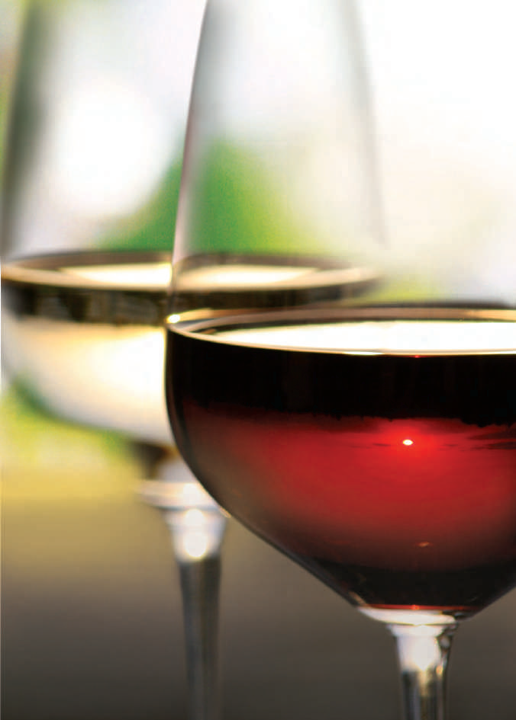
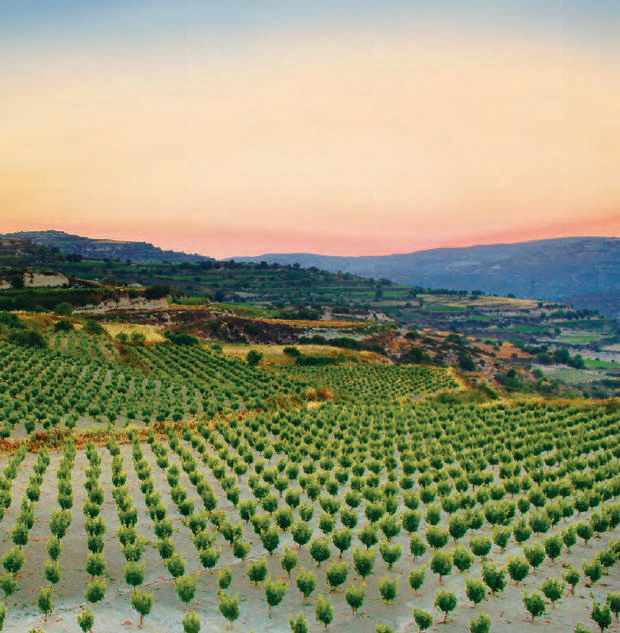

Route 1
Laona Akamas
Pafos, Mesogi, Tsada, Stroumbi, Kathikas, Akourdaleia, Pano Arodes,
Kato Arodes, Ineia, Drouseia, Polis, Pegeia.
This route is in the north-west-ern part of Cyprus. It is of unique interest, as it is not devoted exclusively to wine. In this area, the wine lover and the gourmet can visit four wineries and taste their varied and individualistic wines, in combination with the tasty specialities of Cypriot food. Tavernas, of which there are plenty along the route, will be sure not to disappoint.
Together with these delicious attractions, the visitor may enjoy a unique geography, unlike anywhere else on the island.Travel along the main roads E701 and E709, which climb to elevations provid-ing some fascinating views, with various greenery, substantial expanses of forest and a liberal lacing of vineyards combin-ing to attract our attention.
The outstanding feature of this unique wine zone is the Akamas peninsula. The diverse characteristics of the Akamas morphology, the flora and the wildlife rightfully make it a rare habitat. The visiting explorer/wine-lover truthfully has a feast for the eye, the ears, and the taste-buds
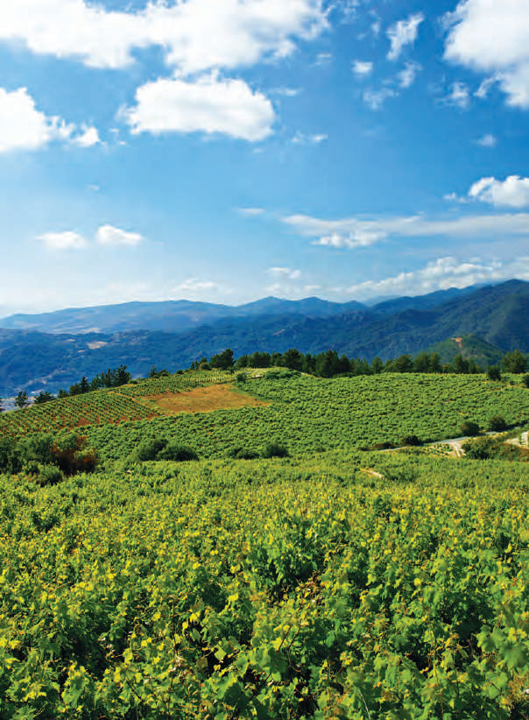
General characteristics
The route is mainly located on the Akamas peninsula. It is a unique area with a remarkable and rare variety of geology, growth and wildlife. The relatively untouched environment and the charm of the communities, make it a joy for the walker and nature lover.
The area is rich in viniculture and vast areas are covered by vineyards. Along the route, there are four wineries worth visiting.
Climate: The area varies from 400 to 650 metres and has an annual rate of rainfall of about 610mm. It has a generally mild climate.
Terroir: Most vineyards of this route are on lime (asbestolithic) ground, some in loamy-gypsum.
Vines: The Kathikas area is famous for its white grape varieties, mainly the native Xynisteri. Most of the villages in the area belong to the Appellation Controllé (OEOP) “Laona Akamas”. In all, a further 19 different varieties are cultivated in the areas.
White varieties: Xynisteri, Malvasia G, Sauvignon Blanc, Riesling, Semillon, Chardonnay, Muscat.
Red varieties: Mavro, Ofthalmo, Lefkada, Maratheftiko, Carignan, Mataro, Cabernet Sauvignon, Cabernet Franc, Alicante B., Grenache, Shiraz, Merlot.
The route: This tour starts by taking the B7, which is the main road to Polis Chryso-chous. After 5km, make the first stop at Mesogi village. On the left side of the road, within the industrial area, well worth a stop is one of the best known producers in the area, the Fikardos Winery. Even though the winery does not own a significant area of its own vineyards, the quality dynamic is quite remarkable. Recently, the winery invested extensively in a unified vineyard of 2.5 hectares in Kato Arodes and 3.5 hectares in Choulou.
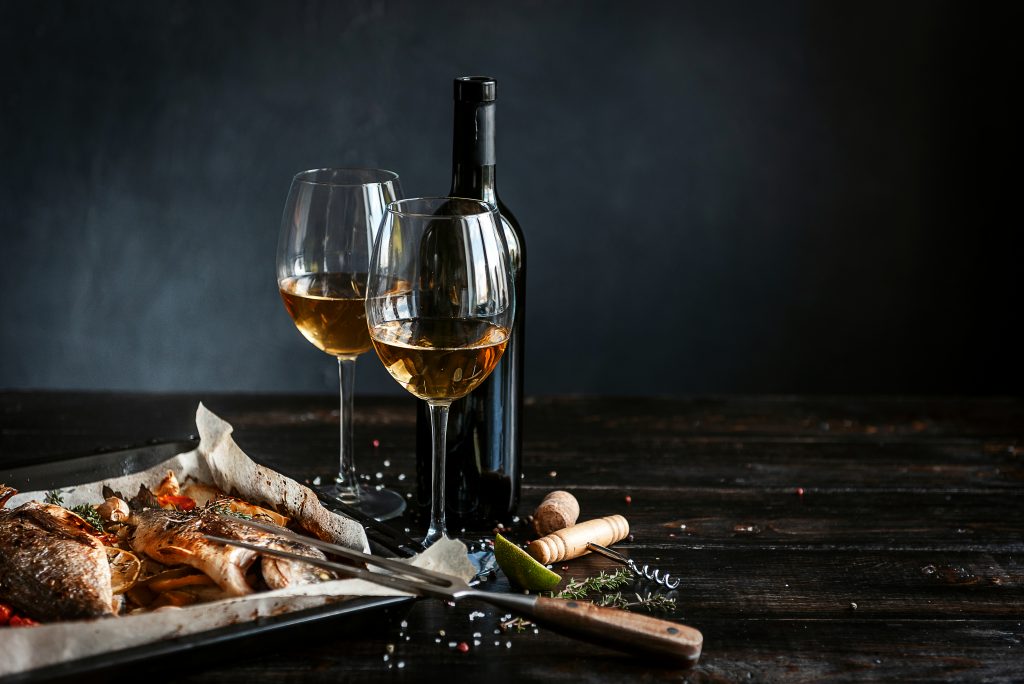

Red wine with meat, white with fish We’ve all heard of the “rule”. But how correct is it? In most cases, red wine goes better with meat, simply because the tannins contained in red wines blend with the proteins of the meat. So, the more tannins a wine has, the more robust and rich meat it requires. Chicken, for example, is matched better with a lighter red wine, the rest of the white meats (pork, rabbit, turkey) with a slightly more robust red wine and the red meats, such as beef, game, etc., with a vintage, complex and full-bodied wine.

What goes well with white wine? A white wine stands better with a fish dish, mussels, or various shellfish. The reason? White wine is generally softer and lighter than red and, of course, has no tannins, although it can also have a pleasing acidity. So it matches that lovely ocean flavour that comes from fresh fish and seafood. Our local Xynisteri will match all our fresh fish – wild or farmed, and we have Chardonnays and Semillon varietals and blends for fish pies, risottos, prawns and lobsters, soups and stews
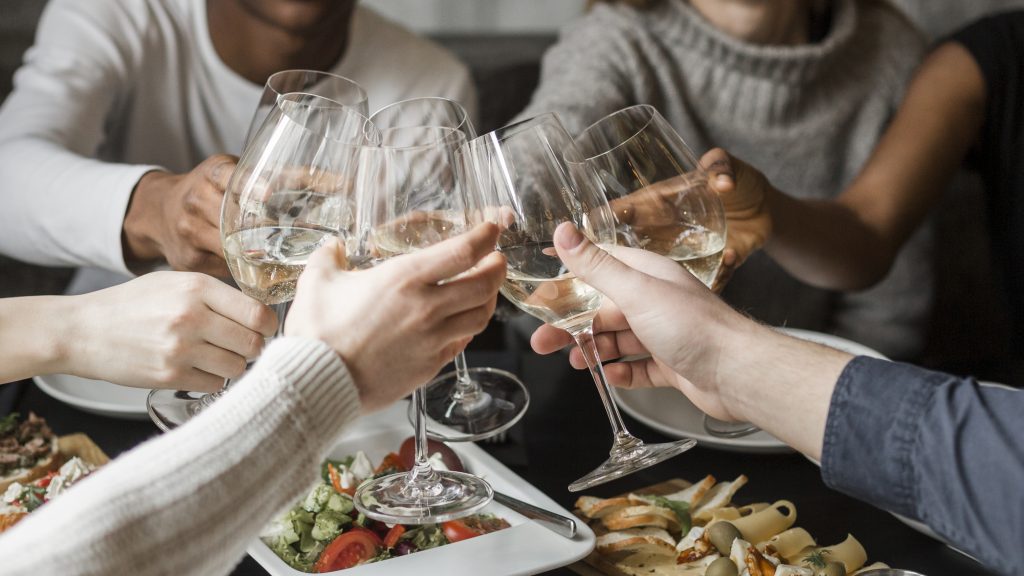
And the rosés?
Today rosé is less misunderstood and underestimated than it used to be. It is a good food match for our Cyprus Mezze and other local dishes. as well as seafood, such as prawns, oysters and lobster. A crisp, dry one sits well with salmon, and also with pasta sauced with tomatoes and basil, and seafood or mushrooms. Perhaps their best match is with the mixed flavour of Chinese and other far-eastern dishes.

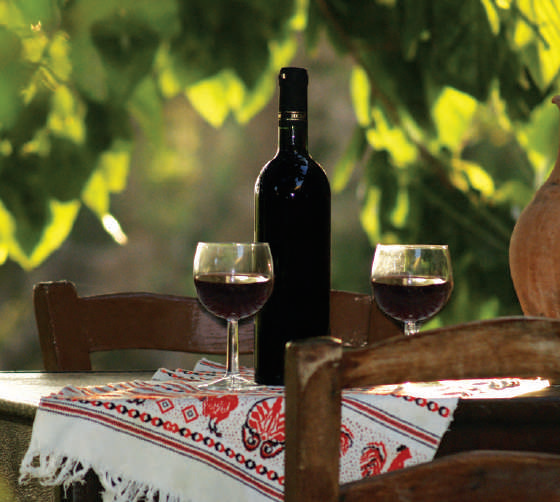
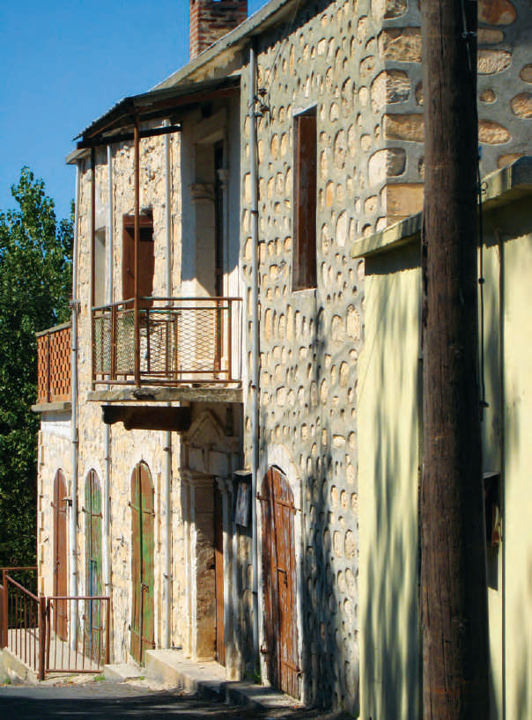

Route 2
Vouni Panagias-Ampelitis
Pafos, Mesogi, Tsada, Stroumbi, Polemi, Psathi, Kannaviou, Asprogia, Pano Panagia, Chrysorrogiatissa, Agia Moni, Statos-Agios Fotios, Koilineia, Galataria, Pentalia, Amargeti, Eledio, Agia Varvara, Acheleia or Choulou, Lemona, Kourdaka, Letymvou, Kallepeia.
In this region which, of course, has long wine traditions, among its profusion of vineyards, sprinkled here and there with modern wineries, you will encounter a welcome not only from the winemakers but everyone else – they are lively, they appreciate good wine and enjoy sharing their enthusiasm and their feelings. Good wine and good company are all you need – that is their motto.

General Characteristics
The route lies east of Pafos in a mountainous area with relatively high altitudes. The steep slopes are covered by forest and vineyards. The environ-ment creates habitats for a large number of flora typified by the clusters of oak (Quercus infectoria). The pine forests are mainly in the north east. The area has many types of mammals, amphibians, reptiles and birds. Along this route, the visitor will find seven wineries open to visitors.
Climate: The area reaches an altitude of 1,144m (3,753 feet) and enjoys above average rainfall. It has a relatively mild climate.
Terroir: The river valley soil is of loamy to clay technical composition. Vineyards: Most of the villages in the area belong to the “Vouni Panayias
-Ambelitis” Appellation Controlé (OEOP), with 27 grape varieties of grape vine, of which there is an impressive showing of Carignan Noir and Cabernet Sauvignon.
White varieties: Xynisteri, Palomino, Malvasia L., Malvasia G., Ugni Blanc, Plant X., Sauvignon Blanc, Riesling, Semillon, Chardonnay, Sultana, Malaga, Muscat of Alexandria.
Red varieties: Mavro, Ofthalmo, Maratheftiko, Lefkada, Carignan, Mattaro (Mourvèdre), Oellade, Cabernet Sauvignon, Cabernet Franc, Alicante B., Black Muscat, Grenache, Shiraz, Merlot.
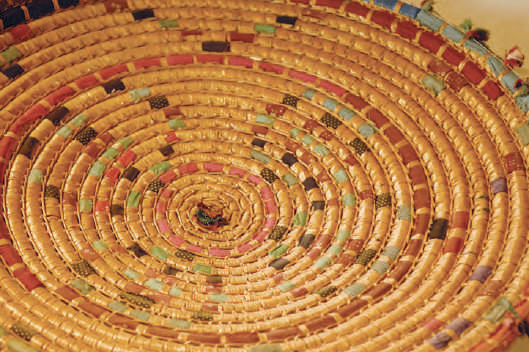
The route
From Pafos town, heading north east, climb the B7 towards Mesogi for 5
kilometres. A little further on you soon reach Tsada. In another five kilometers, take the side road to the right, E703, leading to Polemi. This is a large village, with a multitude of vineyards and groves all around. It still maintains some traditional features, with the most important being the “Metochi of Kykkos”. In recent years its ownership has been transferred to the local community and currently operates as a cultural centre which can be visited daily and has beautiful; gardens. In the centre of the village the visitor finds a coffee shop and other stores. Polemi is home to the Tsalapatis Winery which produces high quality wines. In a specially created space at cellar level visitors can taste the wines where they are made. Don’t forget to try the Xynisteri! The Ε703, on the way out of the village, leads to Psathi after two kilometers to the north east. The village is on a beautiful hilltop, covered in greenery and overlooking the wine producing valley of the Polis (Chryso-chous) river.
A kilometre further down, in a similar setting to the previous commu-nity, lies Agios Dimitrianos, a smaller but equally green village. Between the two communities there is the start of a nature trail calles “Arnies”. Three kilom-eters further away, in the depth of the Ezousa river valley, is the village of Kannaviou, with a panoramic view to the left. At the entrance of the village one finds the Ezousa Estate Winery.
The wine on the table
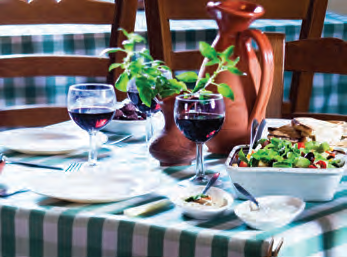
The great moment! The time has come for the wine to offer pleasure to your senses – first the look; secondly, the aroma; finally, the taste. It’s had a varied journey, beginning with growing the vines in the vineyard, harvesting the grapes when ready and, in the winery, carrying out the wine making process. Then, maturation, bottling, further maturation and onwards to the market place. Finally, the wine is on your table, opened, poured; to be enjoyed by you, your family and friends. For all kinds of foods, a glass of your chosen wine is the perfect companion.
The varieties of the island
White varieties
Xynisteri Its the indigenous white grape of Cyprus. Modern technology and winery practice have combined in recent years to produce a fresh, fruity, pleasing white wine, which is best drunk within a year of bottling. Many good examples of 100% Xynisteri are available, and it also blends well with varieties such as Semillon.
Chardonnay Cyprus vineyards would not be complete without the most famous white variety in the world! Originating in Burgundy in France, it has “emigrated” all over the world due to its ability to ad-just easily to a variety of soil and climate features. Here it gives us pleasant, fresh wines, which also have complex layers of flavour, especially when fermented and/or matured in oak.
Sauvignon Blanc France’s Loire Valley is the home of Sauvignon Blanc appeared in Loire in France, where the wines are grassy, full of gooseberry and other fruity notes, sinnewy and aromatic. In Cyprus, it is cultivated in relatively few places, with consequently limited quantities. One for the Sauvignon Blanc buff to search out!
Semillon This variety is noted as the base of the grand sweet wines of Bor-deaux. As a dry white it has has success in the Rhône valley and has settled well here, very much as a marvelous match is the minor (10-20%) blender with our Xynisteri. The island participates with the indigenous Xynisteri in the winemaking of white wines with increased – compared to simple Xynisteri wines – body and greater aro-matic intensity. This produces some most interesting and characterful wines.
Muscat of Alexandria Some wineries produce dry or sweet wines, whilst others mix it with Xynisteri, creating a unique blend.
Promara or Morokanella A rare white variety which produces good sized grape bunches, large berries. It withstands the dry weather and lime soil which character-ize Cypriot vineyards. Skilful vinification brings out citrus and flowery aromas.
Spourtiko This is an early variety with a short growth cycle. The bunch is sparse, medium sized with large berries of golden yellow colour. As well as producing a wine with its own moderately flowert aroma It has a vital use in the vineyard where it is very helpful in the vineyard in the pollina-tion of the rather difficult red grape, the Maratrheftiko.
Red varieties
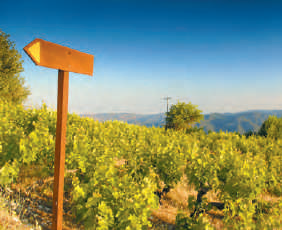
Mavro The traditional and most plant-ed indigenous variety in Cyprus that covers about 60% of the Cypriot vineyard areas. An average-strength grape that gives good table wines for short term consumption, with fair colour density, mild acidity, bland aromas and light taste. In recent years considerable areas of Mavro have been replaced with international varieties such as Cabernet Sauvignon, Shiraz, Merlot, Mataro, Grenache and others. Some win-eries use it in blends.
Maratheftiko Its an important in-digenous variety, full of earthy notes and power that has the clout to give full and aromatic wines, with ageing potential. Re-discovered quite recently it is now achiev-ing varied and interesting results in the hands of different winemakers, and it is a good blender. At the moment its cultiva-tion is limited to less than 2% of the total vine growing area. Worthy reds may be sampled, and some fine rosés.
Ofthalmo Another local variety that is cultivated in small amounts on the island, mainly in the Pitsilia area, but in some parts of Paphos as well. Usually produces wines with pale colour, character and aroma, light body and low acidity, which must be consumed when fresh.
Lefkada A variety that originates form the Greek island of Lefkada, which has for decades been cultivated in Cyprus. These wines usually have a deep red colour, strong and characteristic aroma and some-what astringent taste, due to its partly hard tannins. Good blender.
Cabernet Sauvignon The most fa-mous grape in the world has been culti-vated for several decades in Cyprus. The local Cabernet Sauvignons are usually deep purple, with aromas of green peppers, greens and cedar and noticeable tannins. Some age well.
Cabernet Franc A variety that is cul-tivated fairly widely on the island, is more grassy and less fruity than the Cabernet Sauvignon. In taste it provides lesser body and somewhat open colour. The wines ma-ture faster than the Cabernet Sauvignon, with which it can make a fine blend.
Merlot Few wines of this type are avail-able in Cyprus.However, the first attempts are not disappointing. It is, as they say, “work in progress” and the next few years’ vintages will decide its future here.
Syrah / Shiraz Of the so-called “foreign” grape varieties grown in Cyprus, the Shiraz is the most dynamic and promising. The wines are rich, full in flavour and age well. The addition of oak chips, or aging in oak barrels, adds layers of flavour, producing some excellent wines. It may also be made and enjoyed un-oaked, and, being the versatile grape that it is can produce very good results when blended with Grenache and Mourvèdre/Mataro.
Mataro or Mourvèdre The Spanish variety, that has adjusted so well to our land and climatic conditions, offering ex-cellent wines with body, rich tannins, fruit and aging potential. One critical factor of this grape is that the vintner must know exactly when his grapes are ready – Mataro is not tolerant in this respect!
Carignan Both Lemesos and Pafos regions have hundreds of hectares of vineyards with this type. Most Carignans are rich in acidity, tannins, colour and bit-terness. Best drunk after two years or so, or blended.
Grenache Very successful in Cyprus, where it is often found as a dry or medium-dry varietal rosé, which, nicely chilled is a lovely drink with a light summer Mezze. It is a very well suited wine for the island. The reds have an open colour and less dense in aroma and flavour, compared with Cabernet Sauvignon, Shiraz, etc. It’s a good blender, too, with Shiraz, Mataro or Cabernet Sauvignon.
Yiannoudi This recently re-discovered local variety is beginning to make a name for itself as our winemakers experiment with it in the vineyard and the winery. The wines produced so far have encouraged more plantings. They are of a splendid ruby colour; there is good fruit and acidity, along with body and tannins. Its aroma is of berries and the flora of the Cyprus country-side denote this as an up-and-coming Cyprus red. Watch out for Yiannoudi!
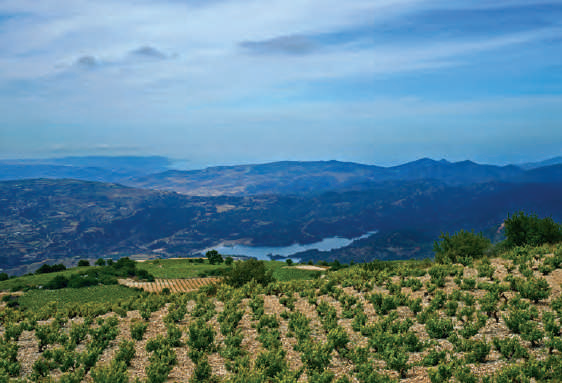
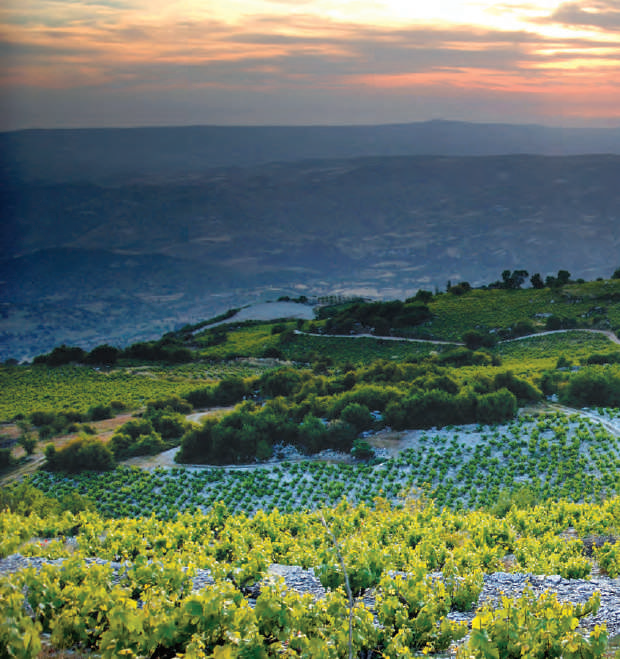

Route 3
Diarizos Valley
Pafos, Acheleia, Kouklia, Nikokleia, Choletria, Stavrokonnou, Kelokedara, Salamiou, Mesana, Arminou, Filousa, Agios Nikolaos, Praitori, Kedares, Agios Georgios, Mamonia, Fasoula.
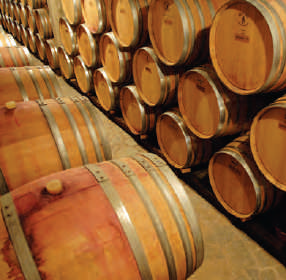
East of the town of Pafos, there are three fertile valleys – of the rivers Ezousa, Xeros and Diarizos. This route climbs
towards the Troodos mountains following the winding Diarizos riverbed, crossing it on occasions and passing 14 hilly villages, with an opportunity to visit just two, yet significant wineries.
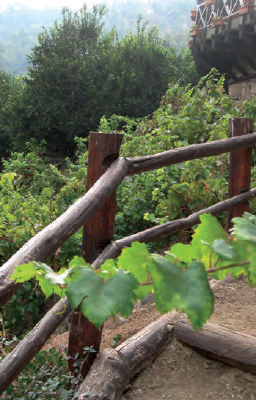
General Characteristics
The valley lies west/southwest of Troodos and includes various types of habitats in a relatively small area. The flora and fauna has not yet been fully explored but so far a lot of endemic, protected and other species have been recorded.
Climate: The area has a relatively mild climate, quite cold in winter and cool in summer.
Terroir: It is the outcome of the depos-its from the rivers sourced in the Troodos mountains. In this area we will find the Mamonia Belt. This cluster comprises a special and complex tectonic collection of igneous, sedimentary and morphed rocks that date back to the Middle Triassic and up to the Upper Cretaceous age (230-75 million years ago). Vineyards: This route does not cross a specific appellation (OEOP) region, nevertheless the wines produced in the area are remarkable. Climbing upwards, you will come across 18 different types of vines, with the predominant being the Mavro.
Red varieties: Mavro, Ofthalmo, Maratheftiko, Lefkada, Carignan, Mattaro, Oellade, Cabernet Sauvignon Cabernet Franc, Alicante B., Grenache, Shiraz, Merlot.
White varieties: Xynisteri, Palomino,
Malaga, Chardonnay, Sultana.

The route
Setting off from the Pafos highway junction and heading east towards Lemesos (Limassol) for eight kilometres, you turn off and go under the highway and over a section of the Xeros river, which leads from the Asprokremos dam down to the sea. The side road to Nikokleia is on your left having exited just before the bridge on the passage to the dam. The road to Nikokleia is on the left bank of the Diarizos and climbs on the sides of the valley far from the riverbed. In four kilometres you will get to the village with a view to the wide river valley. On the other bank, to the east, is the ancient settlement of Palepafos, the present day Kouklia, the centre of adoration of the Cypriot godess Aphrodite.
With Nikokleia behind you, climb towards Choletria, a small village and upon leaving the northern edge of the village, a further four kilomtres away, is the Stavrokonnou settlement. This is a small village which, in contrast to the previous one, maintains a well preserved architecture. The scenery that surrounds the village, looking northwards, has identical characteristics, only that the difference in elevation starts to be felt as the vineyards thicken. Kelokedera, at an altitude of 700 metres is a small village with mostly traditional housing. Here, too, you will find elongated vineyards, visible from the road. From Kelokedara, turning left, you can visit the restored monastery of Panagia of Sinti, about three kilometres west of the village, in the depth of the Xeros valley, on the other bank. The road is rough and requires four wheel drive vehicles. Going northwards, at various points you can see the dazzling view of the valley. The sides, some of them accessible at a few points, others with deep ravines, dotted by vineyards, olive groves, farms and grazing ground with low growth, as well as cypress trees, pine and eucalyptus. Before reaching Salamiou, halfway along the six kilometres between the two villages, the road offers an amazing double view: on your left (west) is the Xeros valley and on your right the Diarizos valley, at an altitude of 700 metres.
Outside Salamiou, you will find an area with benches, tables and covered areas, this time with a view to the Xeros valley. Further down, at crossroad just before the village and lying on your left is another dirt road that leads to Panagia of Sinti, while on the right is a small, rural road going to the Lakria ridge, with the winery of the same name.
This ridge, about 40 to 50 metres above the rest of the village, covers just under a square kilometer and is full of vineyards, while bushes, shrubs and well-spaced trees cover the rough and rocky points. The vineyards are planted at various levels, with different gradi-ents, at a prominent position, absorbing the plentiful sunshine. Even though waterless, with their deep roots piercing the rocky ground, the Lakria vines, and other varieties of the area produce high quality wines.
The Lagria Winery is owned by residents of the Salamiou community, whose families have traditionally been involved in vine growing and vine products. This is a winery that produces small quantities, which do not take up all the production capacity. It aims to produce quality wines, utilizing both grapes from their own vineyards and oithers from contracted growers nearby. It produces four wines: a white from the local Xynisteri, a red dry from local and foreign varieties, a Cabernet Sauvignon and a rosé from the Cypriot Ofthalmo grape. The vineyard tour ends at a purpose-built area for wine tasting where you may also buy the range of wines.
Salamiou is one of the larger traditional villages of Cyprus has been inhabited for four to five thousands years, with many preserved houses and others being restored. You will see them on the road to the church, very near the centre of the village with its restored fountain and a square with its coffee shops and stores.
In Salamiou, at a point near the fountain ideal for a brief stop, you can see the majestic cypress tree, which is about seven centuries old, and is dedicated by the locals to the Panagia (Virgin Mary).
Nearby, among a profusion of vineyards, groves and gardens, is the monastery of Panagia of Salamiotissa. Of the ancient compound remains only a small, stone built and arched building dating to the 16th century. Archdeacon Kyprianos referred in writing in 1788 to Salamiotissa as a “functioning monas-tery, subject to the Pafos prelature”. The icon of the Assumption of Eleousa was saved of the various predations of the past and, today, attracts throngs of faithful every year
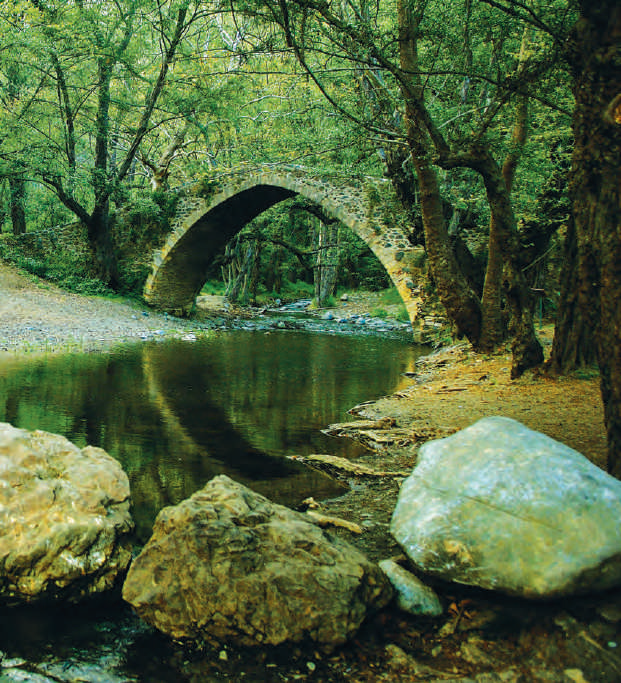
Tasting
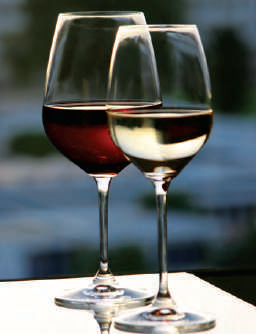
If you plan to try many wines and want to keep a clear head and opinion, as well as to be able to leave standing, all you have to is: sip, run the wine around your tongue, but do not swallow. Expel the wine into the vessel or bin provided by the winery.
Observe the colour
Place a small amount of your wine in a large stemmed glass, making sure not to exceed a quarter of its volume. Literally a few table-spoonsful will do. Hold the glass in front of a white background to examine the clarity of the wine’s colour. Swirl the wine around the glass, to see both its colour and its viscosity. Is it a deep or light colour? Is it viscous or watery? Is it clear or cloudy? Is it new or old? The more you immerse yourself into the world of wine, the more conclusions you will reach from observing the colour.
Deep coloured wines are usually richer aroma and taste, as, you will also learn that wines that flow on the sides of the glass suggest they are viscous, i.e. quite dense and un-watery. The pale yellow or greenish-yellow colour of most white wines when younger, in time turn a deeper yellow-golden. With reds, the purple-like colour of youth, will turn to real deep brick red as it matures, and thence hints of brownish red in a well-aged wine.

Route 4
Krasochoria of Lemesos
Lemesos (Limassol), Kolossi, Erimi, Kantou, Souni-Zanakia, Pano Kivides, Agios Amvrosios, Lofou, Vouni, Koilani, Pera Pedi, Mandria, Kato Platres, Omodos, Vasa, Malia, Arsos, Pachna, Anogyra, Avdimou.
This beautiful wine region comprises 20 scenic villages that decorate the southern slopes of the Troodos moun-
tains. The wineries scattered along this route, each in its own way generously reward the visitor seeking a unique and eclectic wine experience.

General Characteristics
The route takes you through one of the most traditional viniculture areas on the southern face of the Troodos mountains with many winemaking villages and stands out with its unique flora and fauna. The geology of the area is of international interest as it compris-es an ophiolite cluster dating 90 million years, 8,000 metres below sea level.. The geographic and climatic conditions in the area favour the cultivation of two basic indigenous grape varieties, the Mavro and Xynisteri. Along this route you will find 16 wineries that welcome visitors.

Climate: The altitude of the area rises to 1,100 metres and at the higher points, in winter it is cold.
Terroir: The ground in general is shallow to somewhat deep, gravelly andwith large but smooth gradients. It is ideal for vine growing.
Vineyards: The 20 villages along the route belong to the fourth appellation region (OEOP) with 23 different varietals cultivated here.
Red varieties: Mavrro, Ofthalmo, Maratheftiko, Carignan, Mattaro, Oellade, Cabernet Sauvignon, Cabernet Franc, Alicante B., Grenache, Shiraz, Merlot, Lefkada.
White varieties: Xynisteri, Palomino, Malvasia L., Malvasia G., Sauvignon Blanc, Riesling, Semillion, Chardonnay, Malaga.
The route
Starting off from Lemesos (Limas-sol), head west on the A6 highway and
take the exit to Kolossi for a quick visit to the well preserved castle which dates back to the times of the Crusaders. Tradition has it that the island’s unique wine, the Commandaria, takes its name from the knights who were stationed here. Their order was called the “Grande Commanderie of the Knights of St. John” and from here, the local wine they so loved was exported to all the royal and religious courts of Europe.
At the exit of Erimi, two kilometres further west, you will see on the left the Cyprus Wine Museum. It is housed in a beautiful two-storey villa and a vist there will satisfy every wine lover. The Cyprus Wine Museum will take you back in time through the history of winemaking in Cyprus with a fulsome audiovisual presentations, ancient ‘pitharia’ (large clay barrels) and ‘kioupia’ (jars), medieval vessels, old documents and tools, presenting all aspects of winemaking history.
Tasting the wine
Wine hides inside it the efforts and the agony of a whole harvest. Each wine has its own char-acter, unique texture, aromas and flavours that reflect its origins. That’s why we don’t swallow it immediately. We examine it, smell it, let it settle in the mouth for a few seconds, before drinking or spitting it.
Read the label
The label is the wine’s identity. A careful read of the front and, as many that have a label on the back, will inform us of very important features, such as the year of harvest, the country and region of origin, the variety or varieties from which it was produced, the name of the producer, the alcohol content level and other information of lesser importance.
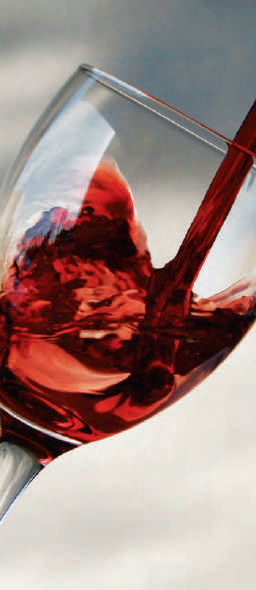
Take a gulp
At last! The time has come to drink wine. Take a good gulp but only enough to fill a third of the mouth. Be careful not to drink it all at once. Give it time. Let it pass along all parts of the tongue, which has buds that identify four flavours – sweet, sour, salty and bitter. The sweet taste is at the front of the tongue, which is why it is quickly realised, the sour is further behind on the sides of the tongue, and the bitter at the back of the
tongue, which senses it most as we swallow. As for the salty, this is a taste that rarely appears in any wine. The big secret of tasting lies in the back of the mouth, in a cavity that in essence is part of the nose. You see, what we perceive as being taste is in fact a large quantity of aroma, as the mouth’s cavity communicates with the smelling centre, where all the aromatic signals are carried. So, keep the wine in your mouth and try at the same time to inhale a little through the mouth. This helps to express aromas more intensely. Mimic the chewing action a little bit, allow the wine to cover all of the tongue, the teeth and the gums, before producing your final verdict. Do you like it or not?
Swirl the wine and sniff
By swirling the wine in the glass you will allow the full release of its aromas, thus, you maximise the joy that it provides you. After swirling the wine in a stemmed glass, approach with your nose the the upper lip of the glass and try to trace the intensity, the finesse, the complexity and the type of aromas of the wine. Repeat the same action until you feel you have clearly received all the aromatic signals of the wine. Only through the gradual familiarisation of your nose to the aromas that exist in the various types of wines will you be able to store aromatic memories which will be recalled every time you try another wine.

Route 5
Commandaria
Lemesos (Limassol), Kolossi, Erimi, Monagri, Agios Georgios, Silikou, Doros, Laneia, Trimilkini, Agios Mamas, Kapileio, Zoopigi, Kalo Chorio, Agios Pavlos, Agios Konstantinos, Louvaras, Gerasa, Apsiou.
This route belongs to Com-mandaria, the legendary wine of the region. The 14 villages that produce it are to be found at an altitude of 500 to 900 metres. They are surrounded by vineyards of indigenous red Mavro and white Xynisteri, the grapes that for centuries have been the backbone of this gorgeous sweet wine. The vines share the landscape with thick, bushy wild growth and sparse woods.
The first stop is the village of Kolossi, location of the castle which dates back to the age of the Crusaders. The Order of Knights of St John who were stationed here were early sponsors and developers of the unique sweet wine of the area, and provided the name that it proudly carries till today. Some researchers suggest that this is probably the mellow “Napa” known from historical times, first mentioned by the Greek poet Hesiod, who flourished sometime between 750 and 650 BC, in his writing “Work and Days”.
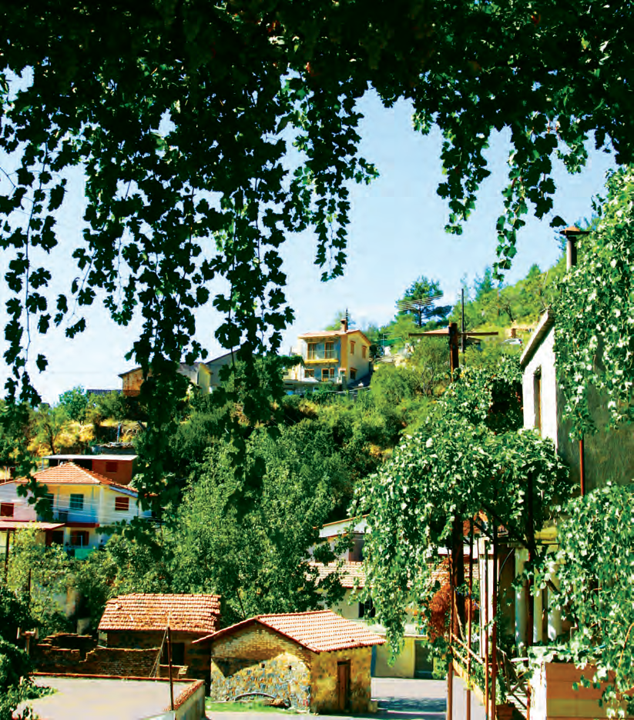
General Characteristics
The rich flora and fauna are quite impressive, as well as the historic and archaeological monuments hereabouts. Here, too is the modern Kouris Dam, the biggest in Cyprus, by virtue of which, the land below it is gradually being trans formed into an important wetland, with great ecological value. The area around the dam is ideal for nature walks, sports and environmental pastimes.
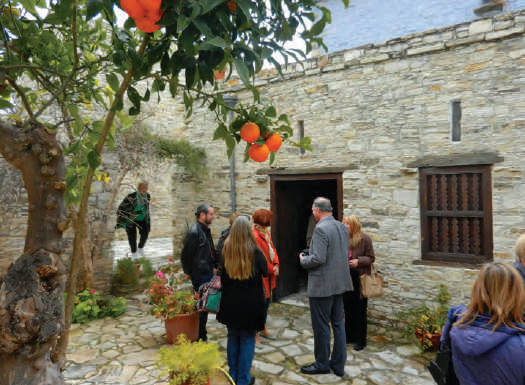
Along the route you will find two significant wineries.
Climate: All 14 Commandaria villages Commandaria are at the height of 500 to 900 metres (1640 to 2625 feet) above sea level. The region is divided into two soil types: limestone and volcanic-sandy. It has limited levels of rainfall, which gives very dry growing conditions because the vineyards are not watered. They survive and prosper with what available rain water there is. These conditions of high temperature, sun-shine and reduced humidity during summer, the altitude, the ground soil and the unique method of processing the grapes, combine to give Com-mandaria its very special flavour and aroma.
Terroir: In contrast with other wine producing zones, this area has a lot of shallow ground together combined with steep slopes and comparatively higher levels of calcium carbonate. Quite harsh in fact, and as a result, the vineyards’ crop per hectare is noticeably lower than those of the Pafos region.
Vineyards: All the villages along this route belong to the “Commandaria” OEOP appellation. As indicated above, most vineyards cultivate the indigenous grape varieties.
Red varieties: Mavro.
White varieties: Xynisteri.
The route
Even though this tour has a northward orientation, at its start we travel west, making the first stop at Kolossi, about 14 kilometres from Lemesos, taking the B6 rural road. Kolossi is in the middle of a fertile agricultural valley which for centuries supplied the local communi-ties. The area has a long history and is often mentioned in the journals of medieval travellers. The rich vegetation of sugar-cane, vineyards and cotton (among others) made it a natural centre of authority for the Frankish nobles. Kolossi Castle was built in the 13th. century to serve as a military and administrative base for the Order of the Knights of St John. A wider area around the castle constituted important feudal land of the Knights. As the administra-tive centre, it was known as the “Grande Commanderie” eventually giving its name to the local wine, the Com-mandaria.
This wine is an appellation product, as its features – the sweetness, unique taste and special aroma – can only be achieved when certain local criteria are met. Firstly, the grapes must come from the completely natural non-irrigated vineyards of the southern slopes of Troodos. Secondly, the traditional production method must be main-tained: harvested grapes are arranged to dry in the sun for five to 20 days, according to weather conditions. Thirdly, after the vinification, there follows an ageing process of at least two years, using the “Mana” method, in which from the large barrel one third of the wine is drawn off for bottling and the remainder is topped up with fresh wine – a variation of the “Solera” system used in the making of sherry and other fortified wines. Commandaria is also fortified with alcohol. Its alcohol-by-volume level is around 15%.

Dessert wines
Dessert wines, are naturally made – no added sugars here! Fer-mentation of the wine is stopped at a point when natural sugars give the wines their sweetness. A good “sweetie” is a wonderful complement to many sweets and desserts as the last course of a meal. They may also be served on their own, at the end of a meal, replacing a dessert. A glass of Commandaria or a Moschato can easily become the grand finale of a wonderful gastronomic even-ing. There are those who hold that a slightly chilled sweet wine and a slice of Madeira cake make a delightful mid-morning break.

Route 6
Pitsilia
Lemesos (Limassol), Trimiklini, Pelendri, Potamitissa, Dymes, Kyperounta, Chandria, Polystypos, Alona, Agros, Agios Ioannis, Agios Theodoros.
This route passes through the mountainous area east of the highest peak of Troodos. This is Pitsilia, a popular name
in folk songs. The wine lover can visit 11 villages, nestling below three proud mountaintops – Olympus at 1,950 metres (6391 feet), Madari at 1,600 (5249 feet) and Papoutsa at 1,400 (4593 feet) – overlooking Pitsilia’s vineyards.
In this rugged landscape, every accessible slope – and hence cultivated – is regarded as a gift from God and the lo-cal people have not left an inch unplant-ed: almond trees, olive groves, walnuts and apples adorn every street and every yard. But of, perhaps, greater interest is images provided by the expanse of vineyards, with the pine forests behind them. The long-ripening grapes here, the highest vineyards in the country, are picked and taken to two local winemakers.
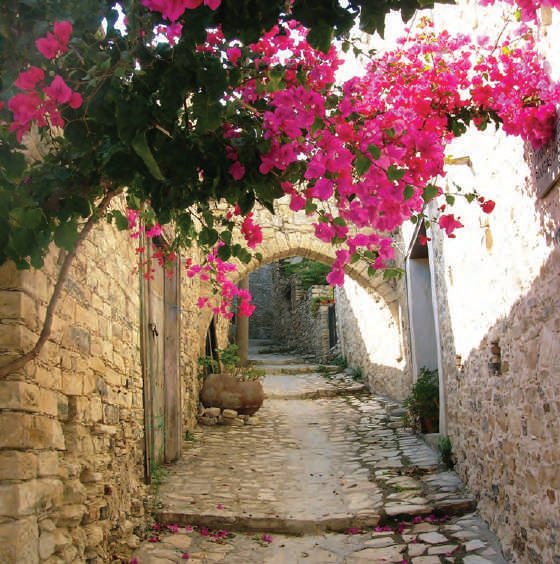
General Characteristics
Pitsilia, one of the most complex mountainous areas of Cyprus, is surrounded by four forests: Troodos in the west, Machairas in the east, the “Adelphoi” in the north and the Limassol forest in the south. It has several high peaks, the main one being Papoutsa at 1,540 metres (5052 feet). Due to good levels of levels of rainfall the area is ex tremely fertile.
Climate: The region has a pleasant moderate climate, with more variation between seasons than elsewhere. In winter the temperature drops below zero, often with ice and snow at its high-est levels. In summer it is mild, warm and enjoyable. Spring and autumn seem quite short.
Terroir: The region is intensely moun-tainous, but the arable lands are inter-spersed harmoniously with tracts of wild growth and forest. The soil is usually rather grey in colour, mild to mid-me-chanical composition with a high level of sand.
Vineyards: The region has 32 villages within the “Pitsilia” OEOP appellation.
Apart from the local Mavro and Xynis-teri, a further 11 grapes are cultivated. Red varieties: Ofthalmo, Vamvakada (Maratheftiko), Cabernet Franc, Caber-net Sauvignon, Mattaro, Mavro, Shiraz, Lefkada, Yiannoudi.
White varieties: Xynisteri, Sauvignon Blanc, Chardonnay, Malaga.

The route
Starting from Lemesos (Limassol), on the A1 highway, turn on to the B8 sign-posted to Troodos. The drive upwards will take you past the Kourris dam. Carry on and in about 10 kilometres you will reach Trimiklini village, which is the start of the journey in mountainous Pitsilia.
Stemware
Forget the carved glasses, they are no longer right for serving wine. The choice of the right glass for every wine is very important as it most often influences the final delight. Good wine glasses must always have a stem. Made from thin, clear glass or crystal, with a big and somewhat long cup that narrows at the upper lip, thus capturing the aromas and allows a quicker and easier determination and, finally, have the right size each time according to the type of wine we serve. For reds we prefer tulip-shaped that allow the wines to breath and express themselves better, while for whites we choose shorter stems in order to pour smaller quantities preventing the wine from staying in the glass to long and its tempera-ture from rising. Naturally, we never fill the glass more than half, allowing the rest of the space to collect the aromas. For champagnes and all the sparkling wines choose a flute, with a long narrow tubular casing that allows the grandeur of the sparkles to reveal themselves in all their might. Finally, for sweet wines the best is a slightly smaller glass which we only fill to a third, as on the one hand dessert wines are al-ways served chilled (7°C-9°C), while, one the other, they are served in small quantities at the end of each meal, replacing or complementing a dessert.
Zivania. The drink of good company
It is not only Commandaria that has been tied to tradition and joy in Cyprus. The other ‘national’ drink of the island is Zivania. With roots that date back to historical times, Zivania is a distillate of wine, clear in colour, with very high alcohol content. The production process for Zivania is
relatively simple. Once grapes are pressed in order to extract the part used for wine making, the remainder of the grape with still some must in it ends up in steel tanks. The first part is called the ‘kefales’ (heads). The largest part of the alcohol is distillated after that with the necessary aromas added. This part is called the ‘kardia’ (heart). Finally, the upper parts of the alcohols is distillated, called the ‘oura’ (tail). Quality zivania results from slow distillation, low temperatures and the right separation of the distillate in the three aforementioned parts.

Route 7
Mountainous Larnaka-Lefkosia
Lefkosia (Nicosia), Skarinou, Lefkara, Kato Drys, Vavla, Ora, Odou, Farmakas, Gourri, Fikardou, Kalo Chorio.
This is a route takes in the rural areas of Larnaka and Lefkosia, making its way through ten villages, and including three wineries, small museums and work-shops. Even though it is outside the traditional wine regions, there are active winemakers here who have planted vineyards with the Assyrtiko, Malvasia Aromatica, Chardonnay and Marath-eftiko grape varieties. The route also includes a visit to the very well known village of Lefkara, popular for its lace and silverware, as well as Fikardou where you can see one of the oldest traditional wine presses in Cyprus.
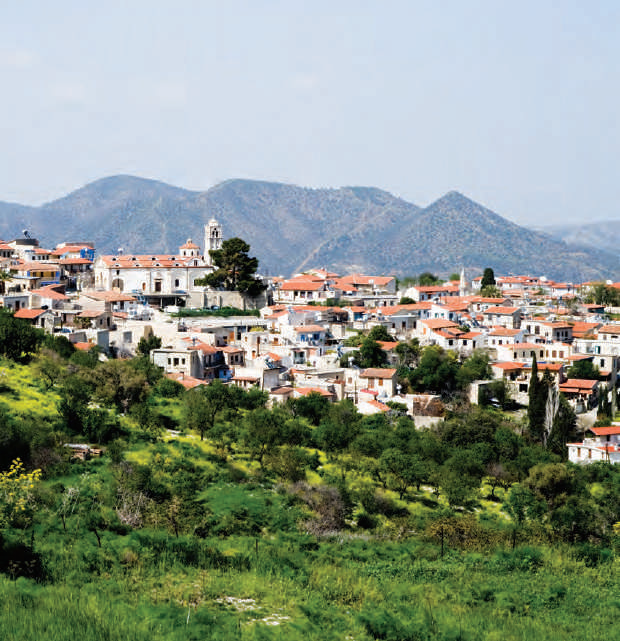
General Characteristics
The geology of this area is quite interest-ing, as it combines the limestone and ophiolite rocks (long-ago rocks from the sea-bed, forced upwards above sea level). Quite a large portion of the Lefkara range is of limestone, with a landscape of steep slopes and deep ravines, into which rainwater tumbles.
The route passes through the Machairas forest which covers part of both Lefkosia and Larnaka districts, with an altitude ranging from 300 metres (984 feet) to the 1,423 metres (4668 feet) of Kionia peak. Geologically, the area belongs to the Troodos ophiolithic complex, cover-ing a forested area of igneous rocks. Climate: Mild climate with very low levels of humidity.
Terroir: Combines limestone with ophi olithic rocks within a range of 100-1,400 metres.
Vineyards: Although outside the boundaries of the traditional winemak-ing regions, growers in the area have produced robust vineyards.
White varieties: Assyrtiko, Malvasia Aromatica, Chardonnay, Xynisteri, Sauvi-gnon blanc.
Red varieties: Maratheftiko, Cabernet, Merlot.
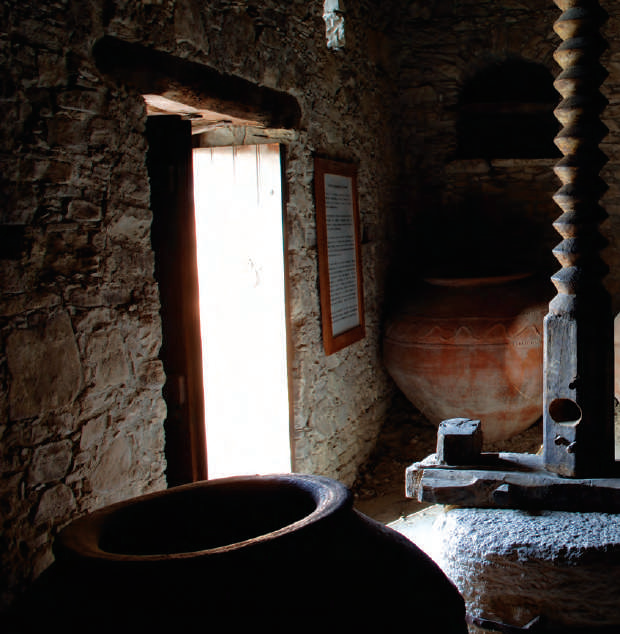
The route
On the Lefkosia-Lemesos highway heading for Lemesos, take the E105 exit at Skarinou and drive towards Vavatsinia. Passing through Skarinou, on the left you will see the Centre for Environmen-tal Information of Rural Larnaca which has a permanent exhibit about the flora, fauna and geology of the area. Next to the centre you may stop for a taste of halloumi and yogurt.
Ten Proposals for Good Wine Service
- It is usually the rule to start wine service with the white, followed by the rosé and then the red.
- If serving only white wine, start from the lighter and milder ones and then progress to the full-bodied, which are usually those fermented and/or aged in oak barrels.
- Younger wines are served first, moving through to the oldest.
- Simpler wines are generally served first gradually rising to more complex, depending on their quality.
- Champagne and sparkling wines are usually served first, mostly as aperitifs.
- Sweet “sparklers” can accompany deserts or are served at a conclusion of a meal.
- Glasses: a stemmed glass is advised, for both appearance and handling’s sake. For red wine a generous size of glass is recommended, whose top is slightly narrower than the middle, which allows you to get a good “nose”. White wine glasses may be a little smaller. When pouring NEVER fill any glass more than a third full – in the case of large red glasses, slightly less is ideal. This allows the wine to “breathe” and release its aroma and some of its acidity.
- Never put wine in the freezer to cool, because the sudden drop in tempera-ture could damage it. 20-60 minutes in the fridge should suffice.
- Don’t leave wines for too long in the fridge, long cooling can deteriorate the quality.
- Keep a wine cooler on a table to keep white and rose wines at an appropriate serving temperature.

















